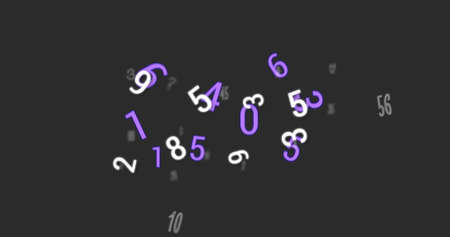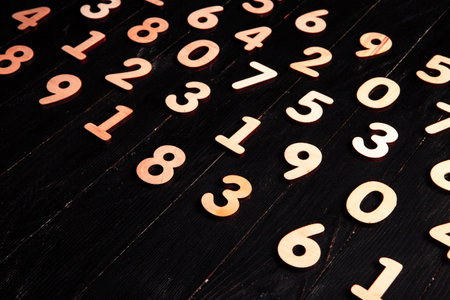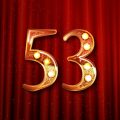Introduction: Setting the Stage for Zodiac Comparisons
The word “zodiac” sparks different images depending on where you’re from and what you’ve grown up with. In the United States, conversations about the zodiac often revolve around the familiar twelve-star constellation signs—Aries, Taurus, Gemini, and so on—rooted in Western astrology. However, many Americans are also aware of the zodiac animals, a system originating from East Asian traditions like Chinese astrology, which assigns an animal to each year in a repeating twelve-year cycle. These two forms of the zodiac—constellation-based and animal-based—offer unique perspectives on personality, fate, and cultural identity. As America becomes increasingly multicultural, understanding both zodiacs has taken on new relevance. This comparison isn’t just about astrology; it’s about how Americans interpret identity, destiny, and even pop culture references through these two symbolic systems. Whether it’s checking your horoscope in a magazine or celebrating Lunar New Year with its rotating animal symbols, the zodiac in both forms shapes everyday conversation and self-understanding. By exploring their origins and cultural meanings side by side, we can gain fresh insight into why these ancient systems still resonate powerfully in contemporary American life.
2. Origins: Tracing the Roots of Zodiac Animals and Zodiac Constellations
To understand the contrast between Zodiac Animals and Zodiac Constellations, its essential to explore their historical beginnings and cultural roots. Both systems have ancient origins, yet they emerged from distinct civilizations with unique worldviews and societal values.
Chinese Zodiac Animals: Ancient Symbolism in East Asia
The Chinese Zodiac, also known as Shengxiao (生肖), is a twelve-year cycle where each year is represented by an animal. This system dates back over 2,000 years, rooted in early Chinese astrology and folklore. The animals—Rat, Ox, Tiger, Rabbit, Dragon, Snake, Horse, Goat, Monkey, Rooster, Dog, Pig—are not just calendar markers but carry deep symbolic meanings tied to personality traits and fortune. The selection of these animals is thought to be influenced by traditional beliefs about auspiciousness, nature cycles, and even ancient farming societys daily life. The Chinese Zodiac is closely associated with Lunar New Year celebrations and remains a vital part of East Asian identity.
Western Zodiac Constellations: Astronomical Heritage of the Mediterranean
The Western Zodiac traces its lineage to Babylonian astronomy and later Greek interpretation. Unlike the animal-based Chinese system, the Western Zodiac is structured around twelve constellations along the ecliptic—Aries, Taurus, Gemini, Cancer, Leo, Virgo, Libra, Scorpio, Sagittarius, Capricorn, Aquarius, Pisces. These constellations are linked to mythological stories from Greco-Roman traditions and were originally used for agricultural calendars and navigation. The Western Zodiac operates on a solar calendar and underpins much of modern Western astrology.
Comparison Table: Chinese vs. Western Zodiac Origins
Aspect |
Chinese Zodiac Animals |
Western Zodiac Constellations |
|---|---|---|
| Historical Origin | Ancient China (over 2,000 years ago) | Babylonia & Ancient Greece (circa 700 BCE) |
| Main Symbols | 12 Animals | 12 Star Constellations |
| Cultural Source | Folklore & Agrarian Society | Astronomy & Mythology |
| Calendar System | Lunar Calendar (12-year cycle) | Solar Calendar (annual cycle) |
| Cultural Influence | East Asia (China, Korea, Vietnam) | Western World (Europe & Americas) |
This deep dive into origins reveals that while both zodiac systems help people make sense of their place in the universe, their foundational differences reflect the unique philosophies and priorities of their respective cultures.

3. How They Work: Systems and Symbols
To truly understand the differences between zodiac animals and zodiac constellations, it helps to break down how each system functions and what they symbolize in daily life. Both systems offer frameworks for interpreting time and personality, but their structures and uses are distinct—especially when we look at how Americans engage with them.
Calendar Years vs. Celestial Cycles
The Chinese zodiac operates on a 12-year cycle, with each year represented by a different animal sign (like Rat, Ox, or Dragon). This animal not only marks the calendar year but is also believed to influence the personality traits of people born in that year. In contrast, Western zodiac constellations are tied to the sun’s apparent position in the sky over a 12-month period. Each sign (Aries through Pisces) corresponds roughly to a month-long segment within the solar year, aligning birthdates with specific constellations rather than years.
Personality Traits: Animal vs. Star Sign
In American culture, Western astrology is more prevalent. People often ask about “sun signs” at parties or consult horoscopes for advice on relationships and career moves. The zodiac constellation someone is born under—say, Scorpio or Gemini—is thought to reveal core aspects of their personality and destiny. On the other hand, Chinese zodiac animals have become an accessible cultural reference point in the US, especially during Lunar New Year celebrations or in Asian-American communities. Here, people might identify themselves as a “Tiger” or “Rabbit,” sometimes comparing traits with friends and family for fun or out of curiosity about heritage.
Astrological Readings: Daily Guidance vs. Annual Themes
Western zodiac readings tend to focus on daily, weekly, or monthly horoscopes based on planetary alignments, offering ongoing guidance about love, work, and luck. Many Americans enjoy checking these predictions in newspapers or apps—even skeptically—as part of pop culture rituals. Chinese zodiac forecasts are more annual: predictions for your animal sign typically surface around Lunar New Year, shaping expectations for the coming year rather than day-to-day advice.
Ultimately, both systems act as symbolic maps for navigating identity and time. While Western astrology leans into individualism and self-discovery through star signs, the Chinese zodiac emphasizes generational cycles and community connections through animal symbols. For Americans, engaging with either—or both—reflects a blend of curiosity, tradition, and a search for meaning in everyday life.
4. Cultural Impact: Influence on Daily Life and Identity
When it comes to cultural impact, both zodiac animals (from the Chinese zodiac) and zodiac constellations (from Western astrology) have carved out unique spaces in American society. Their influence extends beyond tradition and belief, weaving into pop culture, personal identity, and everyday consumer choices.
Pop Culture Presence
The prominence of zodiac signs is easily noticeable in American pop culture. Western astrological signs frequently show up in horoscopes published by mainstream magazines, social media memes, and even character development in TV shows and movies. Meanwhile, zodiac animals have gained traction through the increasing popularity of Lunar New Year celebrations, Asian restaurants, and globalized trends that embrace multicultural symbols.
Personal Identity and Self-Expression
For many Americans, identifying with a zodiac sign—whether animal or constellation—has become a form of self-expression. Astrology apps allow users to track their daily horoscopes and birth charts, while some people adopt traits associated with their Chinese zodiac animal as part of their personal brand. This fusion of East and West often leads to a playful blending of identities, where someone might claim to be an “Aries Dragon,” combining both systems.
Consumer Products and Trends
Zodiac themes are everywhere in the marketplace. From fashion to home décor, companies capitalize on these symbols to appeal to customers’ sense of individuality and destiny. The table below highlights common products inspired by each system:
| Western Zodiac Constellations | Chinese Zodiac Animals | |
|---|---|---|
| Jewelry | Pendants with constellation patterns or birthstones | Charms featuring animals like the Rat or Dragon |
| Home Décor | Zodiac wall art, constellation-themed candles | Lunar New Year banners, animal figurines |
| Fashion | T-shirts with sun sign slogans or images | Socks and hats with animal prints for each year |
Social Rituals and Community
Astrology parties, themed birthday gatherings based on sun signs, and Lunar New Year festivals are all examples of how zodiacs foster a sense of community in America. These events offer opportunities for cross-cultural exchange and reinforce how these symbols are used to forge social bonds.
Systemic Analysis: Why Do Zodiacs Matter?
The ongoing popularity of zodiac animals and constellations in American life reflects deeper needs for meaning, identity, and connection. By integrating both Eastern and Western symbols into daily routines—whether through entertainment or product choices—Americans continue to reinvent traditions while shaping new ways to understand themselves and others.
5. Common Misconceptions and Mash-Ups
In the U.S., the terms “zodiac animals” and “zodiac constellations” are often used interchangeably, leading to a range of misconceptions. Many Americans assume both refer to the same system or that both are linked to astrology in identical ways. However, these two zodiacs—one rooted in East Asian tradition (the Chinese zodiac animals) and one based on Western astrology (the zodiac constellations)—differ significantly in origin, symbolism, and usage.
Blurring Boundaries: How the Mix-Up Happens
American pop culture frequently blends or confuses the two systems. For example, during Lunar New Year celebrations, its common to see horoscopes for the “Year of the Dragon” alongside Western astrological predictions, as if both systems operate under similar principles. Even major retailers and media outlets sometimes conflate the two when marketing themed products or content, reinforcing the idea that zodiac animals like the Rabbit or Tiger have a direct relationship with signs like Aries or Leo.
Assumptions About Astrology
Another widespread misconception is that all zodiac systems predict personality traits and destinies in the same way. In reality, Western zodiac constellations are tied to ones birth month and celestial positioning, while Eastern zodiac animals are based on lunar years and follow a twelve-year cycle. This distinction is often overlooked in American interpretations, resulting in hybrid beliefs such as pairing someones birth year animal with their sun sign for double insight—an approach not recognized by traditional practitioners of either system.
The Influence of Social Media and Memes
Social media has played a significant role in blending these traditions further. Viral memes and quizzes encourage users to identify both their “spirit animal” (often incorrectly substituted with Chinese zodiac animals) and their Western star sign, reinforcing mixed concepts. This mash-up can be fun but may dilute each systems unique cultural context and historical meaning.
The Need for Clarity
Understanding these differences is essential for respecting both traditions and appreciating their distinct value. By addressing these misconceptions directly, Americans can gain deeper insights into global cultural diversity—and avoid reducing rich traditions to quirky personality tests or party themes.
6. Conclusion: Why Both Matter in a Culturally Diverse America
In the United States, where cultural diversity is a defining characteristic, both zodiac animals and zodiac constellations continue to hold significant relevance. The enduring appeal of these two systems stems from their ability to serve as bridges between different heritages and belief systems. For many Americans, Western zodiac constellations are more than just astrological signs—they’re woven into popular culture, daily conversation, and even decision-making rituals around birthdays and relationships. At the same time, the Chinese zodiac animals have gained widespread recognition, celebrated during Lunar New Year festivities and embraced in multicultural settings from classrooms to corporate diversity events.
Reflecting on why both matter reveals deeper truths about American society. These zodiac systems offer individuals ways to explore identity, personality, and destiny through lenses that cross cultural boundaries. In workplaces, schools, and communities across the country, conversations about horoscopes or birth animals can spark curiosity and mutual respect among people of various backgrounds. They provide accessible entry points for learning about worldviews that differ from one’s own—whether it’s understanding the mythological stories behind Leo or appreciating the traits associated with the Year of the Dragon.
Moreover, embracing both zodiac animals and constellations symbolizes America’s ongoing journey toward inclusivity. When families blend traditions—such as celebrating a Western birthday with a cake decorated in reference to someone’s Chinese zodiac sign—it demonstrates how multiculturalism isn’t just tolerated but celebrated. This blending enriches American life by fostering creativity, empathy, and a sense of shared humanity.
Ultimately, the popularity of both zodiac systems reflects a universal human desire for meaning and connection. Whether used for self-reflection or as conversation starters at social gatherings, these traditions remind us that everyone has stories shaped by history and cosmology. In today’s America, honoring both systems is not just about respecting roots; it’s also about cultivating a future where diverse perspectives contribute to a more harmonious society.


